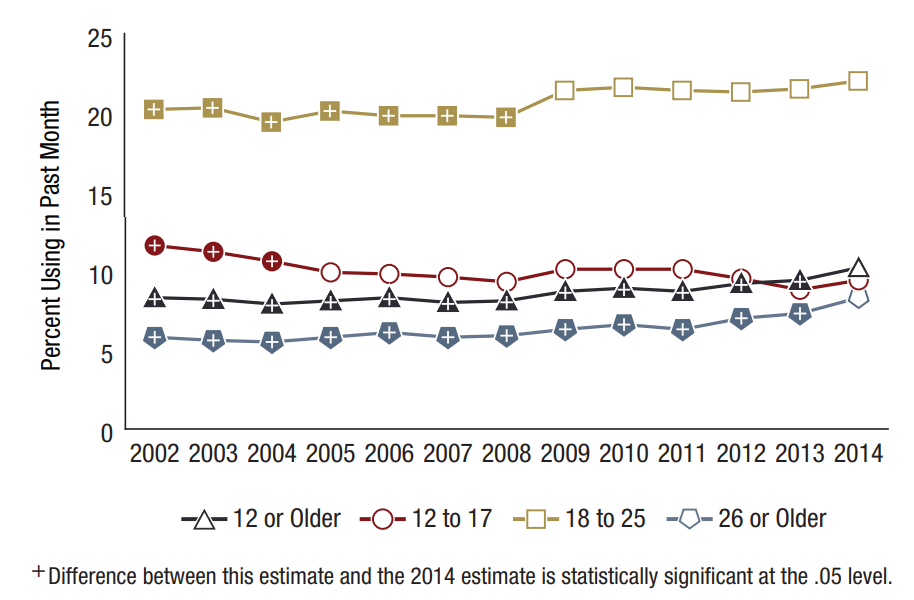By Maddison Graham
We all hear, Don’t Drink and Drive, but something that people don’t always talk about is drugged driving. Driving under the influence of illicit or prescription drugs can be just as dangerous as driving drunk. In 2016, roughly 45% of all drivers killed in a fatal driving accident tested positive for drug use. 38% of those drivers tested had used marijuana and 16% had used some form of opioids. Even more concerning, the number of drug-related fatal crashes increased 16% from 2006 to 2016, and overall participating in drugged driving has increased by 25%, according to the National Highway Traffic Safety Administration (NHTSA).
Source: 2013-2014 National Roadside Survey of Alcohol and Drug Use by Drivers (NHTSA)
Who do you think is the most likely to engage in this type of dangerous behavior? You guessed it. You. College students (ages 18-25) have a much higher chance of engaging in drugged driving. To further the seriousness of this issue, more college students who drove impaired were driving under the influence of marijuana, and not alcohol.
One of the reasons why college students engage in these behaviors more often is because, well, you do more drugs than any other age group. America is facing huge increases in drug use, especially opioids and marijuana. See this figure below, gathered from the National Survey on Drug Use and Health. College-aged adults are almost twice as likely to use drugs than any other age group.
The effects of different drugs can mess with your mental and physical ability to drive safely and correctly. Here are some of the effects of various drugs:
- Marijuana will slow your reaction time and impairs your distance and time perception.
- Cocaine/Methamphetamine leads to reckless and assertive driving behaviors.
- Opioids impairs motor skills and functions, as well as causes drowsiness and memory loss.
The list goes on. There are many other illicit drugs, such as crack, heroin, hallucinogens, inhalants, etc., that are illegal and should never be used before getting behind the wheel (or ever!!!!) Engaging in drugged driving can result in jail time, injury, or even death (and not just your own). Even if you are prescribed the drug in a legal way, always follow the warning signs on the prescription label, which includes not using a motor vehicle while impaired.
Be part of the solution, not the problem. Here are some ways that you can combat drugged driving:
- The first tip is super stereotypical, but it has to be said: Just say no! One high is not worth having a drug charge or DUI on your permanent record.
- Offer to be a designated driver if you find yourself in a situation where you are surrounded by drugs.
- I can’t say this enough, but always use a rideshare, like Uber or Lyft if you are impaired.
- Discuss the dangers of drugged driving with your peers. We all want to graduate in one piece!
To find out more information about drugged driving, check out U in the Driver Seat’s Know the Facts webpage about drugged driving. Always #BetheDude that drives safely!
 Madison Graham is a student at the University of Texas obtaining her master’s degree in Community and Regional Planning. She loves all things transportation, and her focuses include bicycle and pedestrian accessibility and safety.
Madison Graham is a student at the University of Texas obtaining her master’s degree in Community and Regional Planning. She loves all things transportation, and her focuses include bicycle and pedestrian accessibility and safety.
Leave a Reply